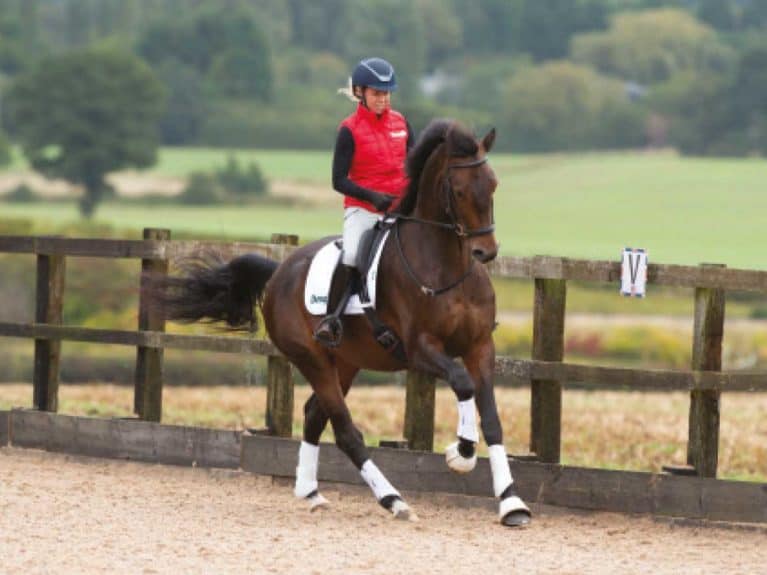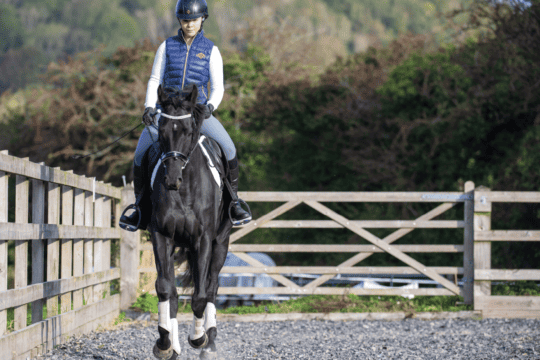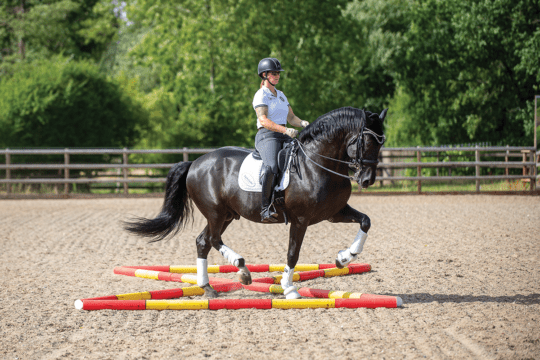Hannah Esberger-Hancock shows how you can use the scales of training to produce your best flatwork yet

Great horses are born, but excellent ones are made. So, while we all dream of horses who are naturally balanced with expressive paces, raw talent will only get you so far. No matter how much natural ability a horse might have, he can’t perform a perfect shoulder-in or half-pass without some strong foundational flatwork in place first.
Here, I always look to the scales of training, the first three in particular – rhythm, suppleness and connection. Knowing how to spot when you’re getting it right, and using exercises to target and test these areas, will pay huge dividends both in your schooling sessions and competition. These are, after all, the building blocks of dressage, so nailing them will mean advanced movements become more accessible and achievable.
The power of pressure and release
Whether in the saddle or on the ground, I’m a big believer in using pressure and release to teach my horses the skills they need. The idea is to add pressure by applying an aid – for example, pushing with your leg to move him away from the track, or using the inside rein to ask him to flex. Once your horse offers the response you’re after, you remove the pressure by softening the aid. That’s not to say you throw your leg or hand away completely. You’re still there, but no longer asking, and have returned to a more relaxed, neutral riding position.
Scaling up
There are six scales of training in total. In this feature, we’ll concentrate on the first three to establish flatwork foundations. You can only focus on the remaining three once these basics are in place.
Step one: Rhythm
If you imagine the scales of training like a pyramid, at the base – and holding the others up – is rhythm. This is your first port of call as you warm up your horse. A good rhythm displays regularity, consistency and, importantly, forwardness. With your horse in front of your leg and maintaining a regular and unhurried rhythm, you’re establishing the obedience and forward momentum required to channel into the rest of your training.
As you warm up, analyse your horse’s rhythm and see if there are any areas for improvement. Do you feel you’re rising and falling at a consistent tempo? If you push him with your leg, does he respond? Focus on these points, making adjustments as you go.
Step two: Suppleness
A supple horse is relaxed and able to bend throughout his whole body – not just his neck – working up and over his back without tension. This will come more easily once he’s in front of your leg.
In your warm-up, ask yourself – is he bending around your inside leg? Is his neck following the curve of the circle? If it’s making a more dramatic shape, he’s probably compensating by overbending through his neck, rather than flexing through his whole body.
Step three: Connection
This scale is often called contact, but I prefer to think of it as connection. He should feel supple and elastic in your hand and present, but not heavy. The contact should feel spongy, so you can close your fist without resistance. You’ll notice him working forward through his body and it’ll feel as though you can put him exactly where you’d like.
Good connection is like a nice conversation down the rein, but it won’t happen unless he’s driving through from behind. And, if you don’t feel some degree of connection from your horse, you won’t go on to produce quality lateral movements and unlock their benefits.
TOP TIP
If your horse feels heavy in your hand, don’t panic. Often heaviness is preferable to lightness when it comes to connection, so work on suppling him up to release some of the weight. If he feels light, he’s holding his body back and not pushing through, leading him to disappear behind the bit and your leg.












